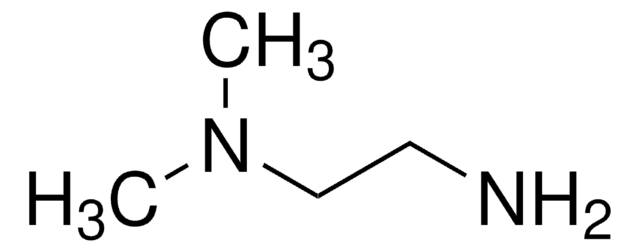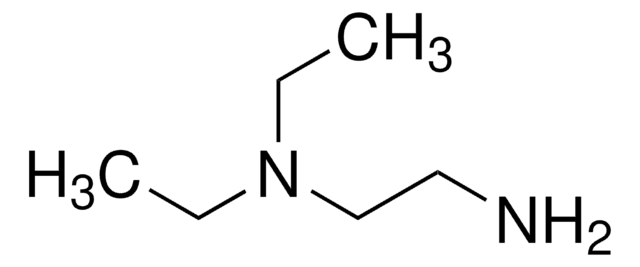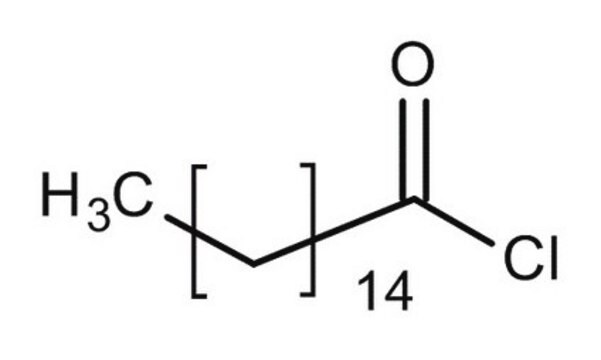Kluczowe dokumenty
156930
Lauroyl chloride
98%
Synonim(y):
Dodecanoyl chloride
About This Item
Polecane produkty
Poziom jakości
Próba
98%
Formularz
liquid
współczynnik refrakcji
n20/D 1.445 (lit.)
bp
134-137 °C/11 mmHg (lit.)
rozpuszczalność
methanol: soluble 100 mg/mL, clear
gęstość
0.946 g/mL at 25 °C (lit.)
grupa funkcyjna
acyl chloride
ciąg SMILES
CCCCCCCCCCCC(Cl)=O
InChI
1S/C12H23ClO/c1-2-3-4-5-6-7-8-9-10-11-12(13)14/h2-11H2,1H3
Klucz InChI
NQGIJDNPUZEBRU-UHFFFAOYSA-N
Zastosowanie
- as tailoring agent for chemical modification of nanocelluloses of different length, nanofibrillated cellulose and cellulose nanocrystals
- in the preparation of acylated collagen with water solubility and better surface activity
- as organic low-friction boundary lubricant in the preparation of novel polyvinyl alcohol hydrogel
- in the synthesis of hemicellulose-based hydrophobic biomaterials
Hasło ostrzegawcze
Danger
Zwroty wskazujące rodzaj zagrożenia
Zwroty wskazujące środki ostrożności
Klasyfikacja zagrożeń
Skin Corr. 1B
Kod klasy składowania
8A - Combustible corrosive hazardous materials
Klasa zagrożenia wodnego (WGK)
WGK 3
Temperatura zapłonu (°F)
284.0 °F - closed cup
Temperatura zapłonu (°C)
140 °C - closed cup
Środki ochrony indywidualnej
Faceshields, Gloves, Goggles, type ABEK (EN14387) respirator filter
Wybierz jedną z najnowszych wersji:
Masz już ten produkt?
Dokumenty związane z niedawno zakupionymi produktami zostały zamieszczone w Bibliotece dokumentów.
Klienci oglądali również te produkty
Nasz zespół naukowców ma doświadczenie we wszystkich obszarach badań, w tym w naukach przyrodniczych, materiałoznawstwie, syntezie chemicznej, chromatografii, analityce i wielu innych dziedzinach.
Skontaktuj się z zespołem ds. pomocy technicznej











